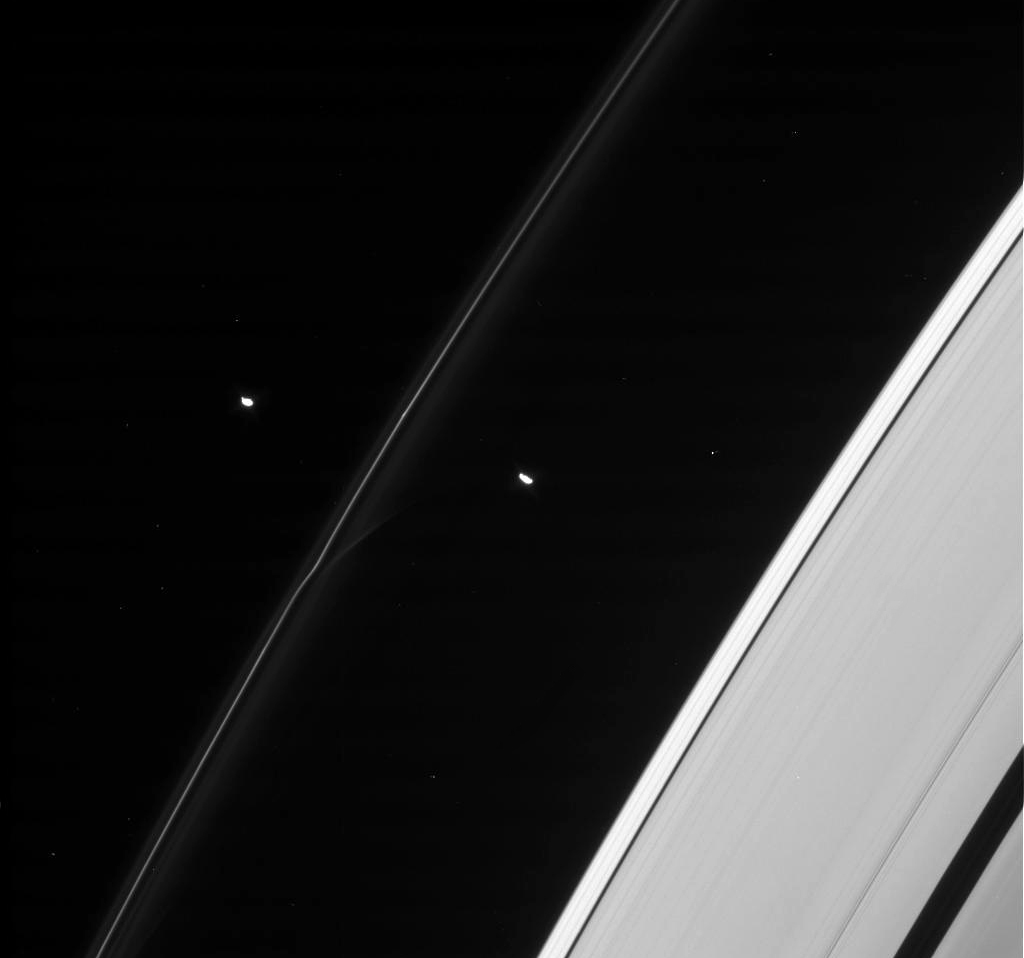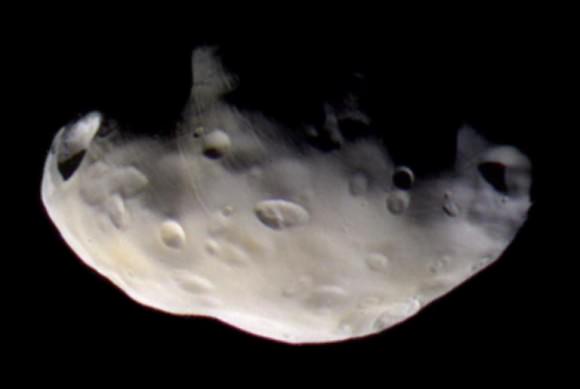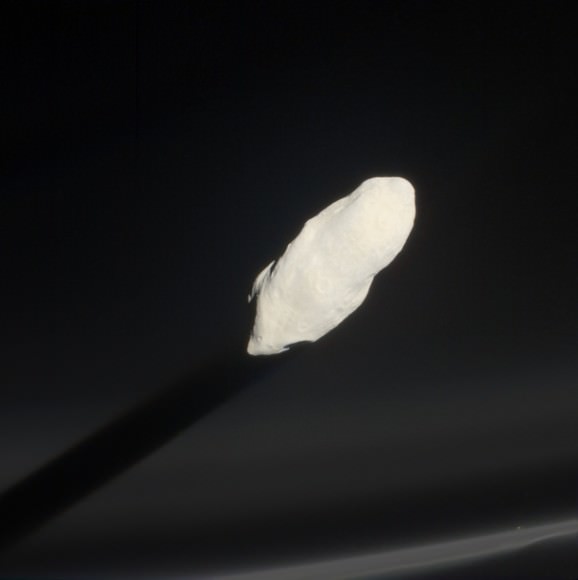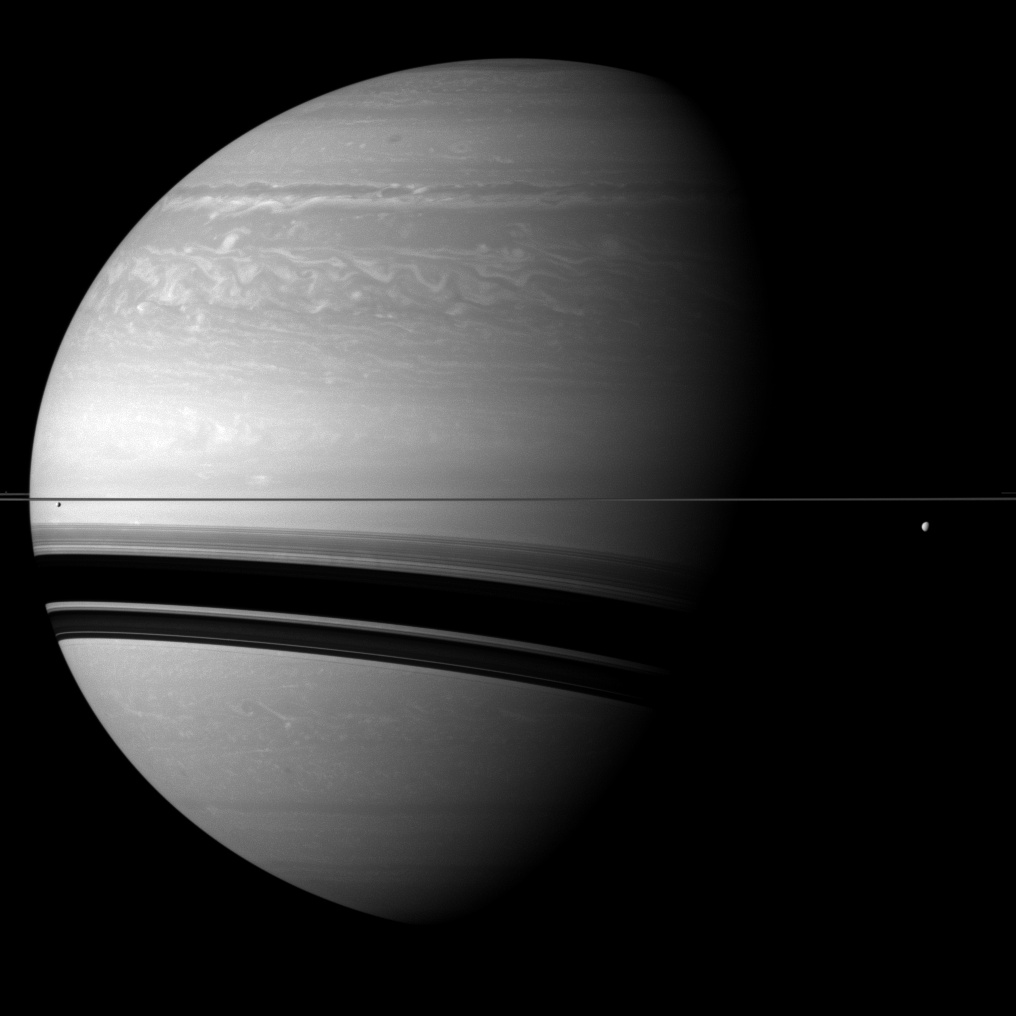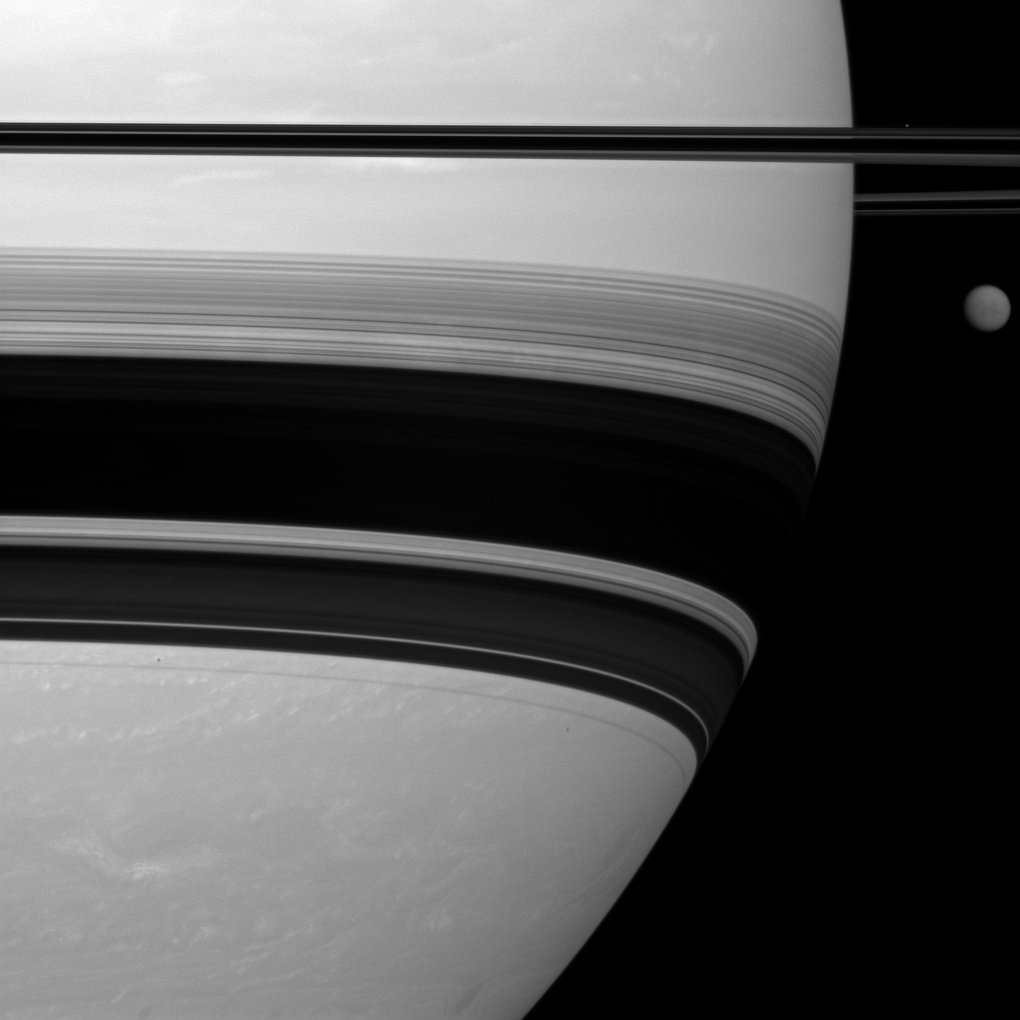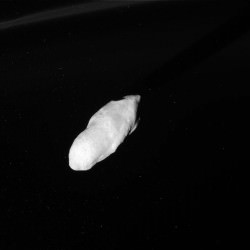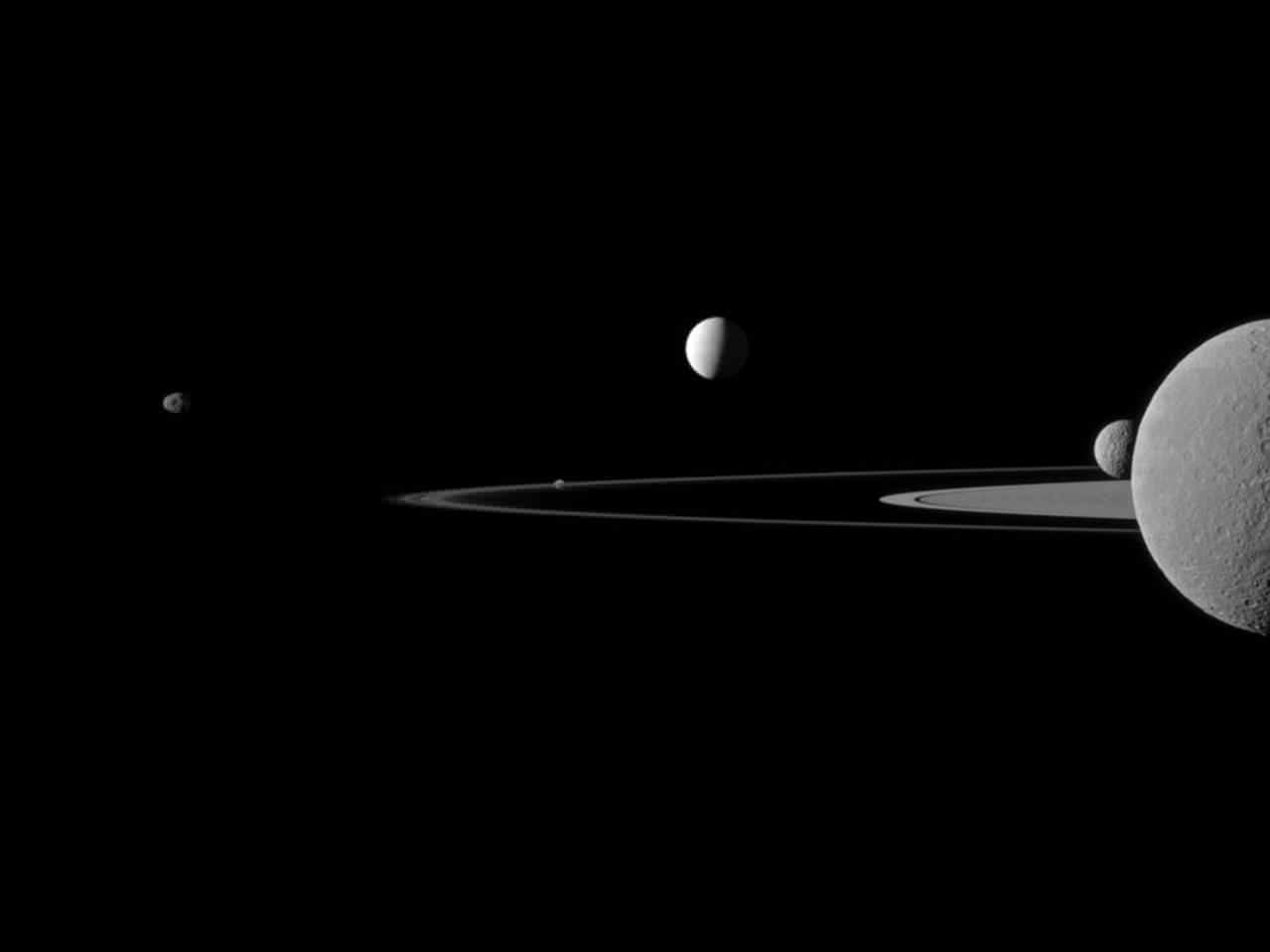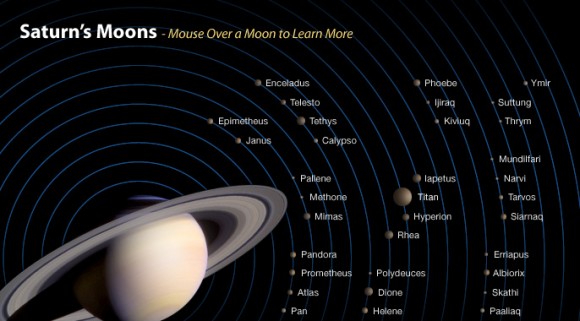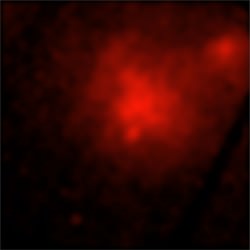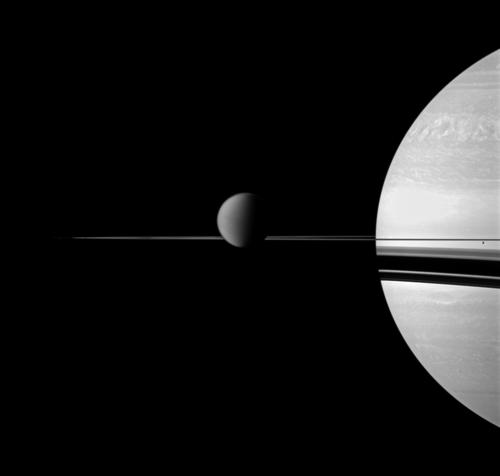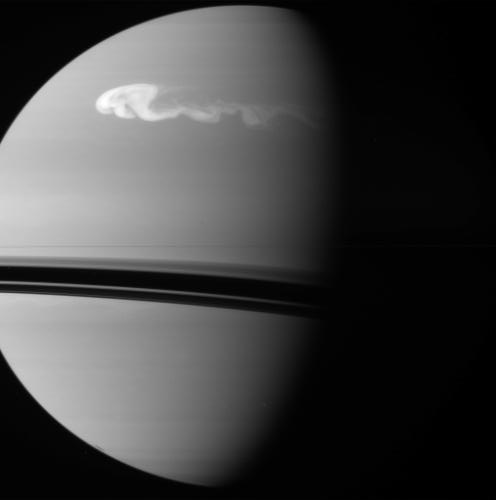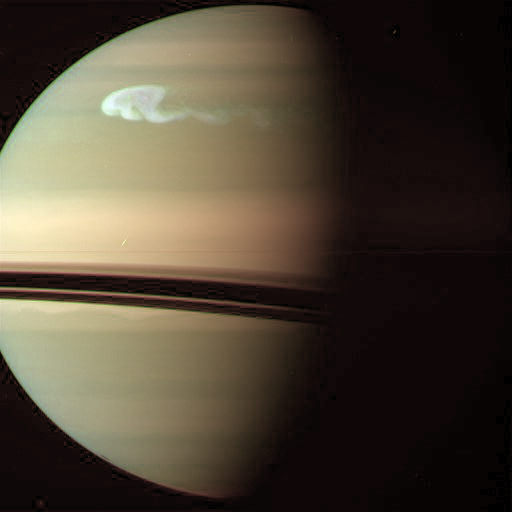This picture is from a couple of years ago, but still worth the extra look. The Cassini spacecraft — busily circling Saturn and gathering data on the ringed planet and its moons — managed to grab five of Saturn’s 62 known moons in one shot. The European Space Agency highlighted the picture on its home page this week.
From left to right, you can see Janus, Pandora, Enceladus, Mimas and Rhea. Don’t be fooled by the rings near Rhea; those are actually Saturn’s rings. Rhea is just blocking the view of the planet from Saturn’s perspective during this picture portrait, which was taken on July 29, 2011.
The cornucopia of moons around Saturn is part of what makes that particular planet so interesting. Titan, the largest, is perhaps the most well-known because of its strange orange haze that intrigued astronomers when the twin Voyager spacecraft zoomed through the system in the 1980s. Cassini arrived in 2004 and revealed many more moons to science for the first time.
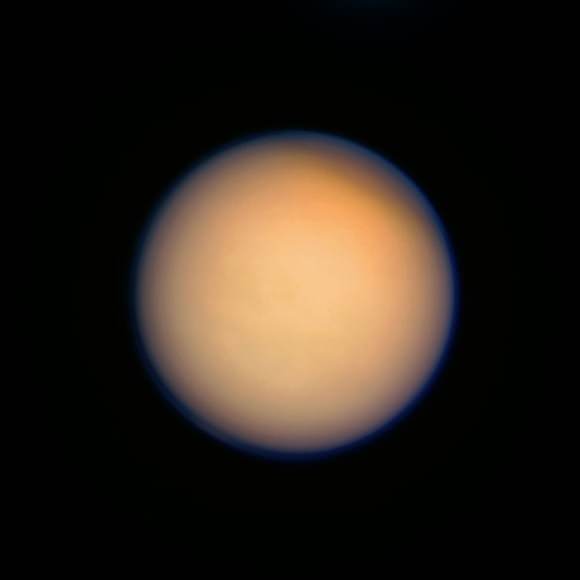
“The dozens of icy moons orbiting Saturn vary drastically in shape, size, surface age and origin. Some of these worlds have hard, rough surfaces, while others are porous bodies coated in a fine blanket of icy particles. All have greater or smaller numbers of craters, and many have ridges and valleys,” NASA wrote on a web page about Saturn’s moons.
“Some, like Dione and Tethys, show evidence of tectonic activity, where forces from within ripped apart their surfaces. Many, like Rhea and Tethys, appear to have formed billions of years ago, while others, like Janus and Epimetheus, could have originally been part of larger bodies that broke up. The study and comparison of these moons tells us a great deal about the history of the Saturn System and of the solar system at large.”
And new discoveries are coming out all the time. Earlier this year, for example, astronomers said that the moon Dione could have had active geysers coming from its surface, such as what is likely happening on Enceladus.


